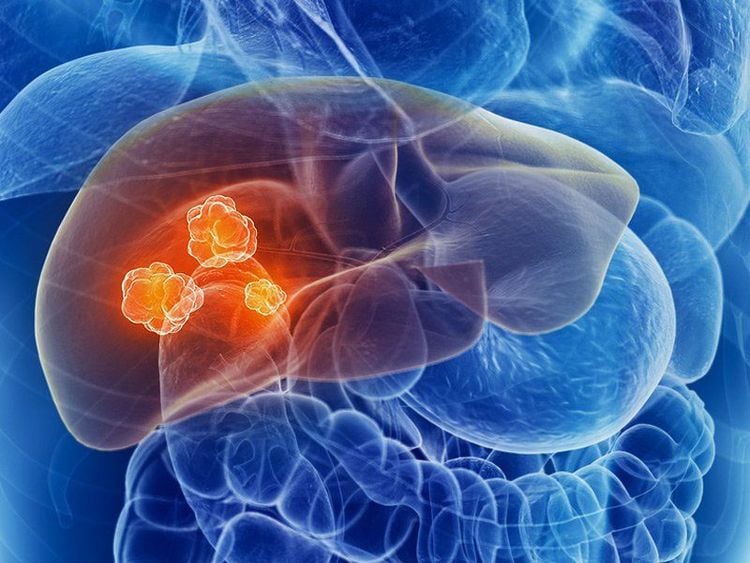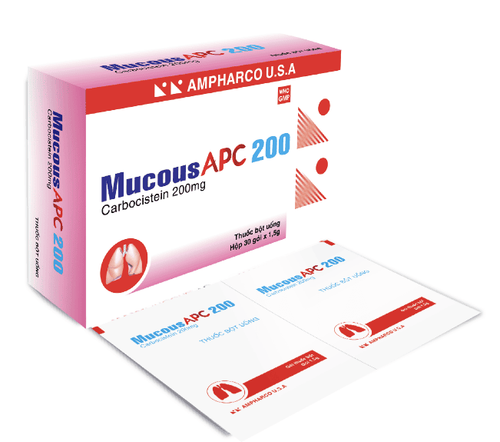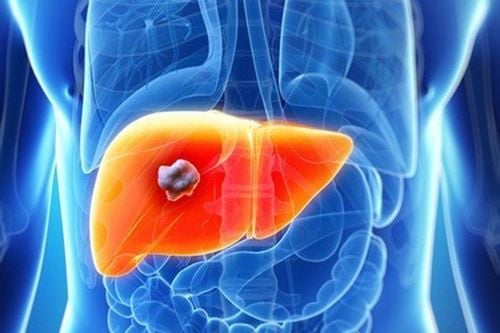This is an automatically translated article.
The article was professionally consulted by Specialist Doctor I Vo Thi Thuy Trang - Department of Medical Examination & Internal Medicine - Vinmec Da Nang International General Hospital.Hepatobiliary abscess is a disease with a relatively small incidence, but the danger to the health and life of the patient is inevitable and is of great concern to many people. Because there are many ways to attack the liver, bacteria are thought to be the leading cause of this disease.
1. Bacteria in the liver will cause what condition?
Bacteria in the liver will destroy liver cells and form pus in the liver. This condition is called a liver abscess. This is a disease that was described from AD 200 by Golien and it was not until 1631 that the Dutchman Bofius first spoke of this disease in Asia.Liver abscess is a rare disease, occurring mainly in Europe with 80% caused by bacteria, 10% by amoeba and the remaining 10% by fungi. Liver abscesses caused by bacteria often have the following main features:
There are many ways for bacteria to enter and attack liver organs such as biliary tract, portal vein, trauma or direct invasion from the liver. surrounding organs... Up to 20% of patients with liver abscess have no known cause. The prevalence of the disease between men and women has a 1.5/1 difference. Bacterial liver abscess patients are mainly elderly, there may be another source of infection inside the body The bacteria cause hepatobiliary abscesses are mainly intestinal or biliary tract bacteria such as E.coli, Klebsiella, Enterococcus, Bacteroides... Most liver abscesses are located in the right lobe, accounting for 2⁄3 of the cases. Both lobes of the liver account for only 5% of the total cases. Many rare small liver abscesses are often associated with biliary tract infection or immunosuppression. 50% of patients have positive blood cultures.

Áp xe gan do vi khuẩn là căn bệnh hiếm gặp hiện nay
2. Bacterial pathways into the liver
There are many different ways for bacteria to enter the liver and cause liver abscess, the paths include:By biliary tract: When the patient has some biliary tract diseases such as gallstones, worms bile ducts, diseases that cause narrowing and cholestasis for a long time, after complications, bacteria will enter the liver to cause liver abscess. This route of bacteria accounts for 40% of all cases. Via the portal vein: If the patient's abdomen is infected, especially the abscess, the bacteria can follow the portal vein into the liver and settle there. 20% of liver abscesses are caused by infection from this route. By lymphatic route, hepatic lymphatic artery: Any infection such as lymph nodes, boils, trauma leads to blood infection accounted for 4% of total cases, patients have scattered pus in lungs, brain, muscles , kidney, bacteria can all from there by lymphatic route into the liver causing liver abscess. Bacteria that enter the liver by arterial route account for 12% of all liver abscess cases.
3. Treatment of hepatobiliary abscess caused by bacteria
3.1 Medical treatment Medical treatment of hepatobiliary abscess includes three methods: using antibiotics, aspiration pus and draining the abscess cavity.Use of antibiotics in the treatment of liver abscesses caused by bacteria with the aim of stopping the progression of sepsis. Several antibiotics are used, such as 3rd generation cephalosporins in combination with metronidazole. The use of antibiotic therapy is often considered when the lesion is not clearly liquefied. However, using antibiotics to treat liver abscess often has a high complication rate.
Aspiration of pus in patients with liver abscess is often performed more than once. The advantage of this method is that it is simple, inexpensive, less invasive, can poke multiple abscesses without worrying about the problem of upstream infection care. The success rate of this method is 60%.
Catheter drainage is the method chosen by most doctors to treat patients with liver abscess, the success rate of this method is quite high, from 80-90%. However, this method is contraindicated for patients with coagulopathy, abscesses close to vital organs such as the heart, abdomen in patients with ascites. Some complications that may occur after performing drainage include hollow organ damage, bleeding, pneumothorax, and pus leak into the peritoneal cavity.

Bác sĩ có thể lựa chọn phương pháp điều trị nội khoa áp xe gan mật do vi khuẩn gây ra
The abscess has ruptured or is in a state of imminent rupture. Treatment by medical methods has failed. The liver abscess has many cavities, thick walls or solid pus. There are associated lesions within the abdominal cavity requiring surgical intervention. In addition to treating liver abscess, the doctor will treat the causes that cause bacteria to move into the liver to help completely prevent the risk of liver abscess recurrence.
Liver abscess is a dangerous disease and causes many serious complications to health, but proactively preventing the disease is extremely simple and highly effective if you do it right.
Vinmec International General Hospital with a system of modern facilities, medical equipment and a team of experts and doctors with many years of experience in medical examination and treatment, patients can rest assured to visit examination and treatment at the Hospital when there are abnormal signs of health.
Please dial HOTLINE for more information or register for an appointment HERE. Download MyVinmec app to make appointments faster and to manage your bookings easily.













